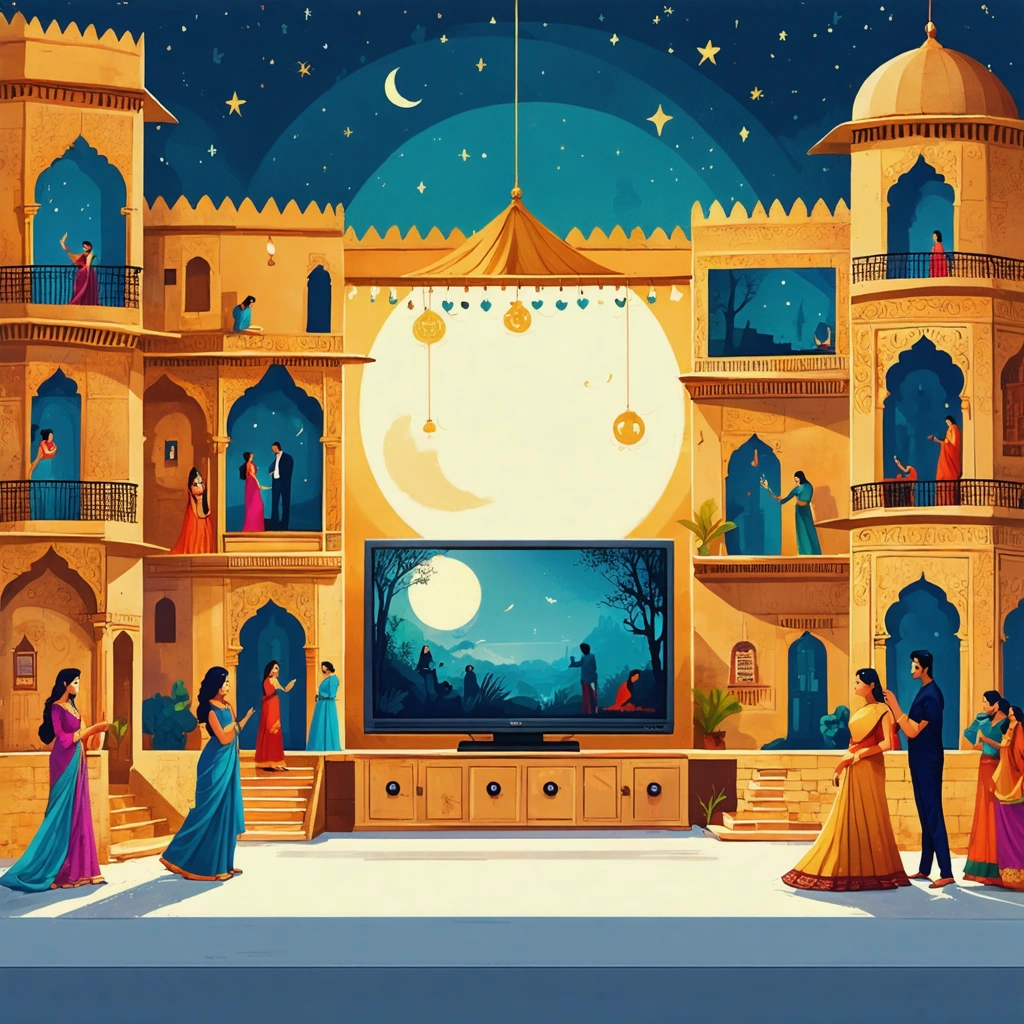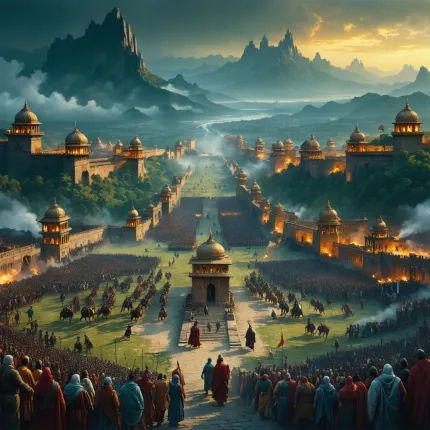TV Serials’ Cultural Impact: Discover how TV serials shape India’s cultural narrative in 2025.

When Fiction Mirrors Reality: The Unseen Power of TV Serials
Have you ever caught yourself humming a tune from a TV serial or recalling a dramatic scene that felt so real it lingered in your thoughts long after the episode ended? In 2025, television serials in India are more than just entertainment—they are powerful cultural touchstones that influence societal values, customs, and even everyday conversations. Shows like the Cast of Ghar Ki Lakshmi Betiyann, Cast of Chup Chup Ke, and Cast of Sasural Simar Ka 2 are not merely scripted dramas; they function as mirrors reflecting the evolving dynamics of Indian culture while simultaneously shaping them.
But why does this matter? The rapid modernization of India, fueled by technological advancement and urbanization, has created an intriguing paradox: while many strive to preserve tradition, the younger generations are constantly negotiating identities influenced by global and local narratives. TV serials have stepped into this complex space, acting as both educators and influencers, sometimes consciously and other times subtly. However, beneath the surface of catchy dialogues and plot twists lies a powerful narrative force that impacts social norms, family structures, gender roles, and even regional dialects.
Why Do TV Serials Hold Such Sway Over Indian Society?
Let’s face it—India’s diverse population is glued to their television sets for hours daily, with serials acting as a communal experience that transcends language, class, and geography. The Cast of Ghar Ki Lakshmi Betiyann has long been celebrated for its portrayal of familial bonds and the trials of womanhood, resonating with millions who see their own struggles and aspirations in its characters. Similarly, the Cast of Chup Chup Ke brings humor and relatable family dilemmas into living rooms, sparking conversations that often reflect deeper cultural debates.
Even the recently popular Cast of Sasural Simar Ka 2 has carved a niche with its blend of traditional values and contemporary issues, showing how the old and new India coexist and sometimes collide within the same household. These shows are not just scripted stories but cultural phenomena that subtly guide perceptions about morality, success, and relationships.
Nevertheless, this influence isn’t always straightforward or universally positive. Sometimes, the portrayal of stereotypes or melodramatic exaggerations can reinforce outdated views or create unrealistic expectations. This duality raises important questions: How do these serials balance entertainment with responsibility? In what ways do they reflect the aspirations or anxieties of Indian society in 2025? And importantly, how aware are viewers of the cultural narratives being shaped around them?
The Cultural Dialogue: More Than Just Entertainment
Exploring these questions is crucial because TV serials in India act as informal educators and cultural ambassadors. They introduce audiences to festivals, rituals, and social etiquette, subtly influencing behaviors and attitudes. For instance, storylines involving marriage customs, gender roles, or even language use can either challenge or reinforce societal norms.
Moreover, these serials have become platforms where contemporary issues—such as women’s empowerment, mental health, and intergenerational conflicts—are dramatized, often sparking wider public discourse. The Cast of Ghar Ki Lakshmi Betiyann, for example, has been praised for its nuanced portrayal of women balancing tradition and independence, while Chup Chup Ke uses humor to dissect family dynamics that many viewers find relatable.
In this article, we will delve deeper into the cultural impact of TV serials in India today, focusing on how they influence social values, reflect changing attitudes, and shape collective identity. We’ll analyze popular serials and their casts to understand the narratives they promote and their resonance with audiences across the country.
Stay with us as we unravel the intricate tapestry of India’s cultural storytelling through the lens of television serials, highlighting why in 2025, these shows are more relevant—and impactful—than ever before.

TV Serials’ Cultural Impact: Discover How TV Serials Shape India’s Cultural Narrative in 2025
How do TV serials influence societal values and cultural perceptions in India?
Television serials in India have long served as a mirror to society, reflecting and sometimes shaping cultural values, social norms, and collective aspirations. In 2025, the influence of TV serials remains profound, with shows weaving together traditional themes and contemporary issues, thereby continuously evolving the cultural narrative.
TV serials often portray family dynamics, gender roles, and social hierarchies, which help audiences negotiate their understanding of these concepts in real life. For example, the Cast of Ghar Ki Lakshmi Betiyann showcases the struggles and triumphs of daughters in a traditionally patriarchal setting, challenging and reshaping viewers’ perceptions about women’s roles within the family and society.
Similarly, through its engaging storylines and characters, the Cast of Chup Chup Ke presents narratives around honesty, integrity, and the complexities of interpersonal relationships, encouraging viewers to reflect on their own moral compasses and social interactions.
Moreover, serials like Cast of Sasural Simar Ka 2 blend mythology, fantasy, and contemporary drama, creating a unique cultural tapestry that resonates with diverse audiences across India. This blend ensures that traditional beliefs are kept alive while being adapted for modern sensibilities.
What role do TV serials play in preserving and transforming Indian cultural identity?
TV serials serve a dual role: preservation of cultural heritage and transformation of cultural identity. They act as repositories of folklore, customs, language, and rituals, often dramatizing festivals, rituals, and social customs that might otherwise fade in the face of rapid urbanization and globalization.
For instance, the Cast of Ghar Ki Lakshmi Betiyann brings forward regional traditions and family values, thereby preserving cultural elements that resonate with many Indian households.
At the same time, serials introduce progressive ideas that gradually shift cultural norms. The Cast of Sasural Simar Ka 2 includes story arcs that tackle issues like gender equality, empowerment, and social justice, subtly encouraging viewers to reconsider outdated conventions.
This process of cultural negotiation allows Indian society to maintain its rich heritage while adapting to modern realities, making TV serials essential agents of cultural evolution.
How do TV serials impact gender roles and women’s representation in Indian society?
Women’s representation in Indian TV serials has historically oscillated between stereotypical portrayals and progressive characterizations. The evolving narratives in 2025 reflect a more nuanced approach to gender roles, often challenging patriarchal norms.
The Cast of Chup Chup Ke, for example, portrays female characters who are resilient, independent, and complex, which helps break away from one-dimensional stereotypes. These representations inspire viewers and contribute to social discussions about women's rights and empowerment.
Meanwhile, serials like Ghar Ki Lakshmi Betiyann highlight the importance of daughters and their empowerment within the family structure, countering long-standing cultural biases against female children.
By showcasing such diverse female protagonists, TV serials influence societal attitudes toward gender equality and encourage a more inclusive cultural narrative.
How do casting choices affect the cultural impact of TV serials?
Casting plays a crucial role in the authenticity and relatability of TV serials, which directly influences their cultural impact. Familiar faces and talented actors can embody cultural nuances effectively, making stories more believable and emotionally engaging.
The Cast of Sasural Simar Ka 2 includes actors who have become household names, and their portrayals bring depth to traditional and modern characters alike. Such casting choices help bridge generational gaps, ensuring the serial’s appeal to a broad demographic.
Similarly, the Cast of Ghar Ki Lakshmi Betiyann and Cast of Chup Chup Ke have been carefully curated to reflect the diversity of Indian society. By representing various linguistic backgrounds, social classes, and age groups, these casts contribute to a richer cultural tapestry and foster inclusivity.
What measurable effects do TV serials have on Indian culture and society?
Several studies and industry reports highlight the measurable impact of TV serials on Indian society:
- Increased Awareness: Serials addressing social issues such as dowry, domestic violence, and education have led to increased public discourse and awareness.
- Behavioral Change: Viewership of progressive serials correlates with shifts in attitudes towards women’s education and employment, as shown in surveys conducted by media research firms.
- Language and Fashion Trends: Popular dialogues, attire, and customs portrayed in serials often influence urban and rural fashion choices, strengthening cultural identity.
- Economic Impact: Successful serials generate employment, boost advertising revenues, and contribute to the cultural economy by promoting local talent.
These factors underscore how TV serials are not just entertainment but influential cultural artifacts that shape India’s evolving identity.
How might the cultural impact of TV serials evolve beyond 2025?
With the rise of digital platforms and changing viewer preferences, TV serials in India are expected to integrate more diverse narratives and experimental storytelling techniques in the coming years. This evolution will likely deepen their cultural impact by:
- Incorporating more regional stories and languages to enhance cultural representation and inclusivity.
- Expanding themes around mental health, LGBTQ+ rights, and environmental issues, reflecting contemporary societal concerns.
- Utilizing interactive content and transmedia storytelling to engage younger audiences more effectively.
- Continuing to leverage star power and authentic casting, as seen in the Cast of Sasural Simar Ka 2, to maintain relatability and cultural resonance.
Such innovations will ensure TV serials remain a dynamic force in shaping India’s cultural narrative well beyond 2025.


